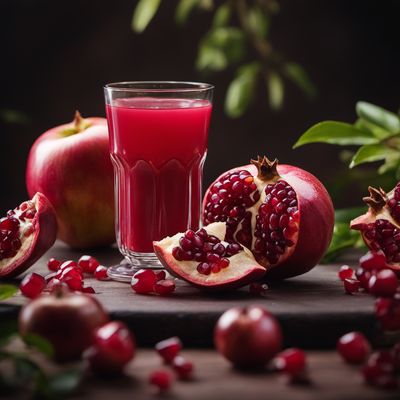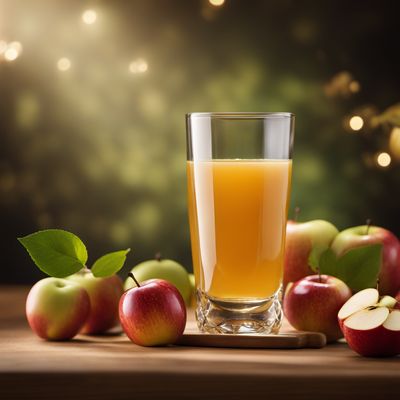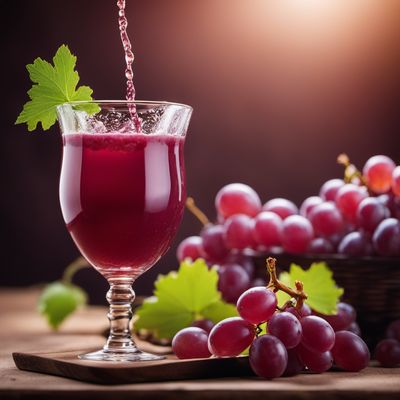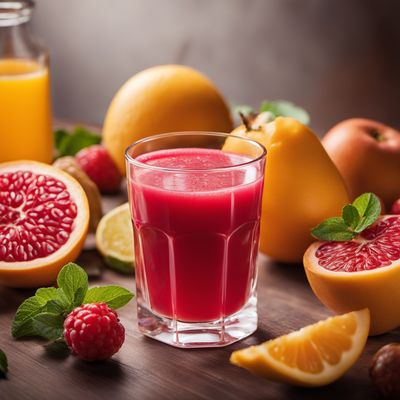
Ingredient
Juice, cranberry
Tart Elixir: Unveiling the Vibrant World of Cranberry Juice
Cranberry juice is a tart and refreshing beverage that is known for its vibrant red color and tangy flavor. It has a slightly sweet and sour taste, with a hint of bitterness that adds complexity to its profile. Cranberry juice is commonly used in cocktails, punches, and mocktails, as well as in marinades and sauces for savory dishes.
Origins and history
Cranberries are native to North America and have been used by Native American tribes for centuries. They were an important part of their diet and were also used for medicinal purposes. Cranberry juice gained popularity in the 20th century and is now enjoyed worldwide for its unique flavor and potential health benefits. Today, cranberries are primarily cultivated in the United States and Canada.
Nutritional information
Cranberry juice is a good source of vitamin C and antioxidants, which help support a healthy immune system and protect against oxidative stress. It is also low in calories and fat, making it a suitable choice for those looking to maintain a balanced diet. However, it is important to choose cranberry juice without added sugars or artificial sweeteners to maximize its nutritional benefits.
Allergens
Cranberry juice is not known to be a common allergen. However, individuals with a history of allergies to berries or other fruits should exercise caution and consult with a healthcare professional if they experience any adverse reactions after consuming cranberry juice.
How to select
When selecting cranberry juice, opt for 100% pure cranberry juice without any added sugars or artificial sweeteners. Read the label carefully to ensure that the product is made from real cranberries and does not contain any unnecessary additives. Additionally, choose organic or locally sourced cranberry juice whenever possible to support sustainable farming practices and minimize exposure to pesticides.
Storage recommendations
To maintain the freshness and quality of cranberry juice, store it in the refrigerator after opening. Keep the bottle tightly sealed to prevent oxidation and spoilage. It is best consumed within a week of opening for optimal taste and quality. Unopened cranberry juice can be stored in a cool and dark place, away from direct sunlight and heat sources, for an extended period.
How to produce
Cranberries can be grown in home gardens or small-scale farms with the right conditions. They require acidic soil, ample sunlight, and consistent moisture to thrive. However, cultivating cranberries can be challenging, and it is recommended to consult with local agricultural experts or extension offices for specific guidance on growing cranberries in your area.
Preparation tips
Cranberry juice can be enjoyed on its own as a refreshing beverage, served chilled or over ice. It is also commonly used as a base for cocktails, such as Cosmopolitans and Sea Breezes, adding a tangy and vibrant twist to classic recipes. Furthermore, cranberry juice can be used to create flavorful marinades for meats, tangy sauces for poultry, and fruity dressings for salads, enhancing the overall taste and presentation of the dish.
Culinary uses
Cranberry juice is commonly used in a variety of cocktails, punches, and mocktails. It is also a popular ingredient in sauces, marinades, and dressings, adding a tangy and vibrant flavor to savory dishes. Additionally, cranberry juice can be used to create refreshing sorbets, jellies, and fruit compotes, showcasing its versatility in both sweet and savory applications.
Availability
Cranberries are primarily cultivated in the United States and Canada, with Wisconsin and Massachusetts being the leading cranberry-producing states in the U.S. They are also grown in other regions around the world, including Chile and Europe. Cranberry juice is widely available in supermarkets, grocery stores, and specialty beverage shops.
More ingredients from this category » Browse all

Juice, pomegranate
"The Ruby Elixir: Unveiling the Secrets of Pomegranate Juice"

Juice, blackberry
The Dark Elixir

Juice, lime
The Zesty Elixir

Juice, apple
The Essence of Nature: Exploring the Refreshing Apple Juice

Juice, red currant
Tangy Elixir: Unleash the Vibrant Flavors of Red Currant

Juice, grape
The Liquid Jewel

Juice, guava
"Tropical Delight: Exploring the Exotic Flavors of Guava Juice"

Juice, black currant
The Dark Elixir

Juice, elderberry
The Immunity Booster

Juice, passion fruit
The Tropical Elixir

Juice, nectarine
"The Golden Elixir: Unleashing the Vibrant Flavors of Nectarine Juice"

Juice, mango
The Tropical Elixir

